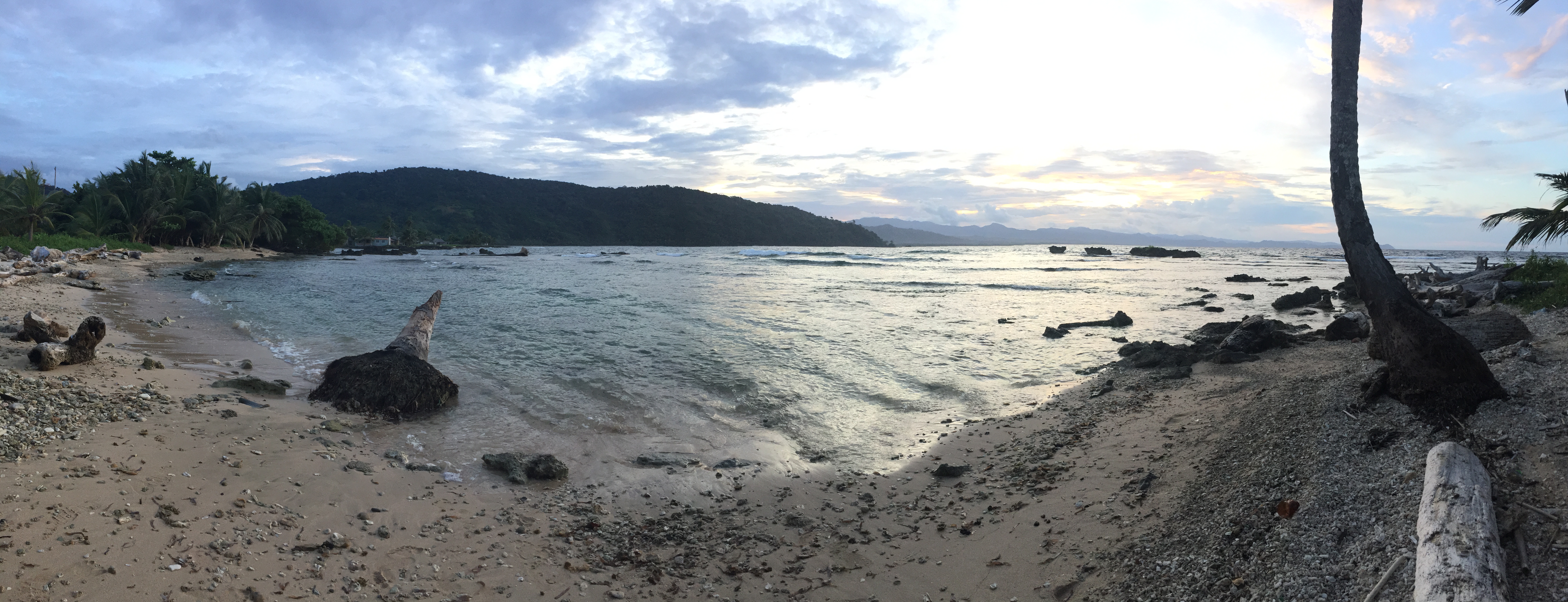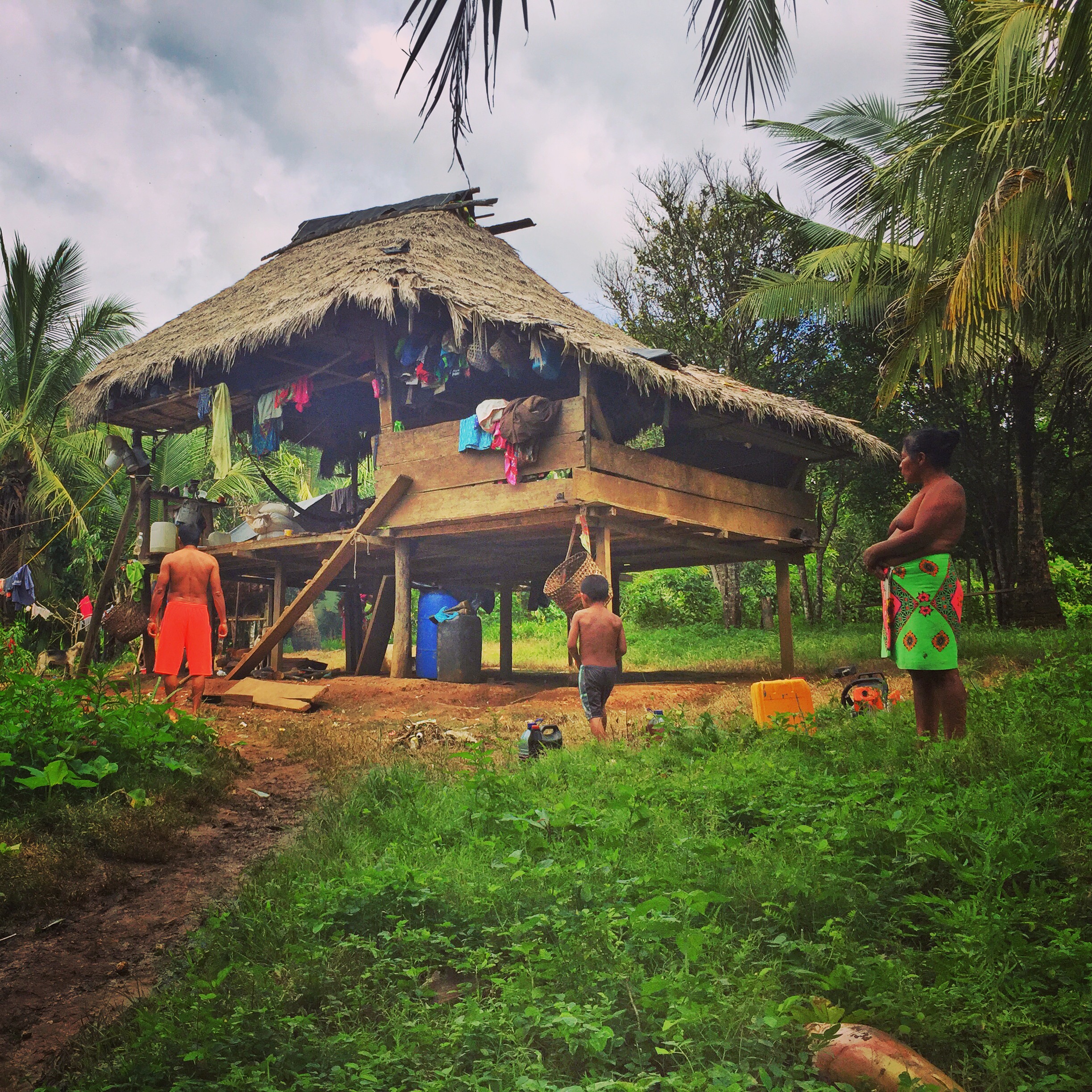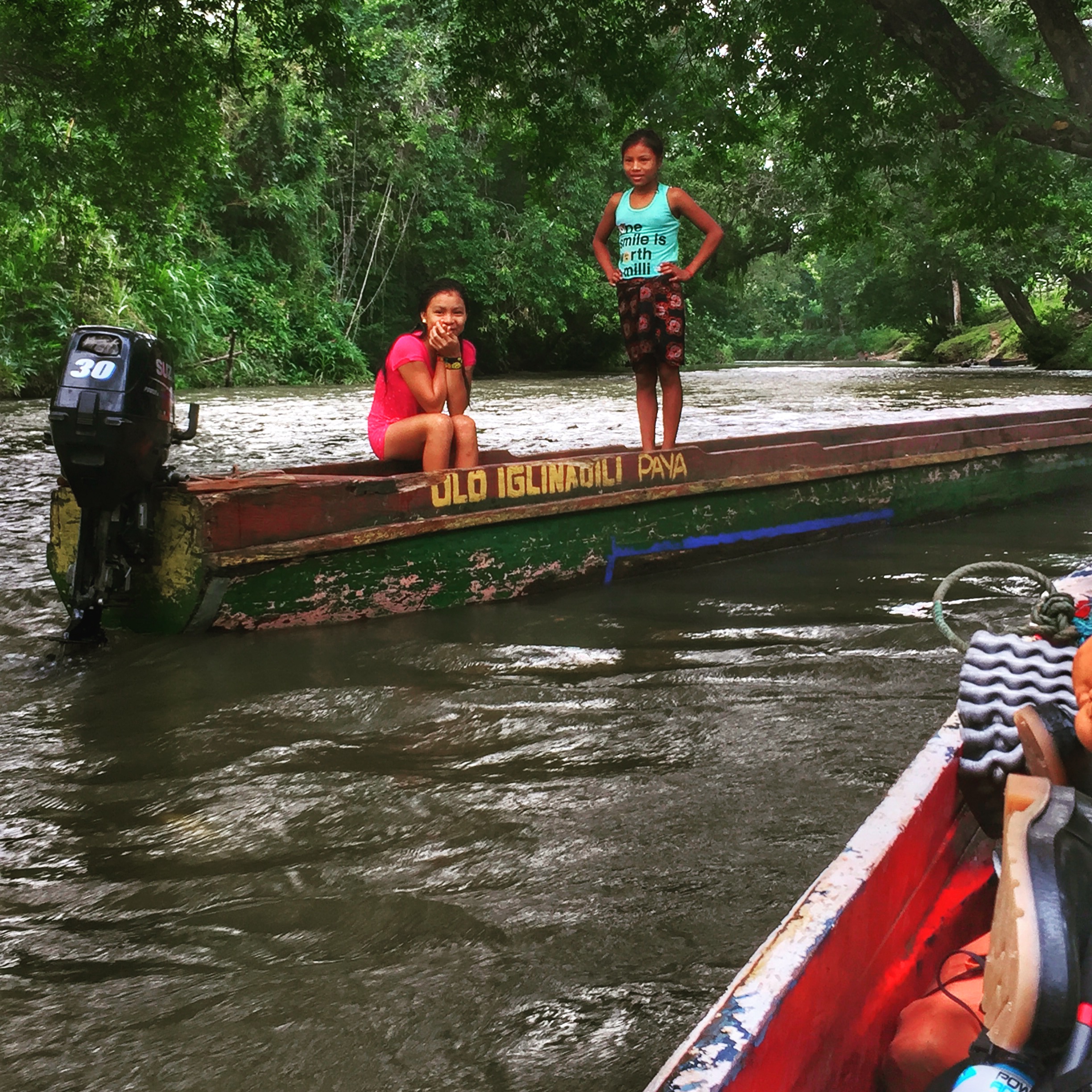Written by Fidgit
The Darién Gap has been crossed on foot thousands of times. The trick is, you have to be desperate to do so, thus most of the foot traffic through the region are people fleeing their native countries. Whether you attempt it legally or illegally, a crossing means accepting a high level of risk, investing a lot of finances, and complicated logistics.If you are considering exploring this region, I suggest the adventure of boats through the Caribbean from Panama to Colombia, it is lovely and you will be welcome there.

What IS the Darién Gap
Darién is a province at the south-eastern end of Panama. It contains a roadless 90 km gap between the Americas (“who needs roads with rivers like these!” say the locals) where even internationally backed power-lines cannot run because the various demands of the tribes are so logistically complicated. Dominated by thick jungle it hosts a mind boggling array of plants and wildlife. It also hosts a number of insular groups, such as the Guna (formerly Kuna or Cuna) peoples and the paramilitares. The international messaging is that the jungle and the paramilitares are what prevent travelers from crossing when our roadblock were the border agents.
If you are interested in entering the region to see the bird and plant life and are willing to spend at least $500 USD (a 3 day trip), there are a few options and you are in for a delight. If you are interested in traversing the region, brace yourself. I have not successfully completed any of these traverses, this is just what I learned in months of planning and two weeks of getting yanked around. We approached the Darien from three different directions with intent to cross by land and with hiring a legal guide, were unable to complete it.
I choose to share this information because I know our sort are banging down the doors of the regions we are told are best left alone. This article is for those of you who insist on taking the hard way because that resonates for me. Also if you are this sort you know you have to at least project the semblance of knowing what you are talking about in order to get anywhere and I want to help you do that.
My only ask in exchange for this information is that you proceed with all due respect to everyone you meet. There are good people, generous, kind people in the Darien who would love to see more tourism and less terror. But they are sandwiched between governments who prefer to just keep people out.
If you choose to pursue a terrestrial crossing, do so knowing you risk death and if you don’t, it is because of good fortune and kind people. If you are robbed remember, it is just money and stuff, you aren’t going to get your life back. Furthermore, you must confront the fact that as a tourist, your life is weighed as being worth more, the people most likely to be murdered are those who help you.
If you make it through a Darien traverse, you are a fortunate fool, not a hero.

There are a few land-based routes, though they all also involve travel by boat. The pink route, called la trocha, is the route most refugees follow. There is a well traveled trail, you will have to hire illegal guides and be prepared to negotiate along the way and place a lot of trust in complete strangers. You will have to carry cash to pay these guides (totaling around $2000-$6000 pp) and also be prepared to have that cash stolen. It also means crossing the border at a point with no border agents so you will be detained upon encountering SENAFRONT in Panama, though only temporarily if you have the “right” passport.
The orange route travels more closely in the “mountains.” This is also the region most frequented by the paramilitares. This is the only land option if you want to cross legally as it leads to Capurngana where you can be stamped out of Colombia. Then there is a 20 km trail (this trail is legal and sometimes touristed and one of the safer stretches) to Puerto Obaldia, where you are stamped in to Panama. You will likely still be detained. Another option is to take a boat to Capurgana (cost about $20 USD from Turbo to there), walk across the border, and stamp in at Puerto Obaldia.
From Puerto Obaldia there is word of trails to Meteti and Yaviza. Again, these are refugee trails and the locals in Puerto Obaldia where we spent a day said the routes took 4-6 days and lives are often lost.

There are three main factors which make a land-based crossing difficult. These can broadly be grouped as: Social, Terrestrial, and Logistical.
Social
There are three main groups you need to consider when entering the Darien: The Guna, the paramilitares, and SENAFRONT (the Panamanian border guards).
The Guna peoples are savvy to the promise of tourism. They grow much of the coffee in Panama and they have an elaborate systems of laws and process unto themselves. For a number of reasons, you are not making it into or through the Darien without a Guna guide. Beyond your guide they also charge at each village and insist you “hire” a member of their village as “security.” Gift giving is helpful. I recommend practical gifts such as gasoline, medicines (eye drops and dermatological needs are ever present), or sewing materials.

We did not encounter any paramilitares in our time in the region. My understanding is that this region used to be dominated by FARC. As that group continues to hold its peace agreement with Colombia, splinter groups of paramilitares have filled that space and these groups have even more of a theft and drug trafficking orientation than their predecessors. Many locals feel they are more dangerous, likely to shoot first and if they don’t, they want to rob you and if you prove not worth robbing, they’ll kill you for the inconvenience.
With SENAFRONT, I encountered a string of sexist, corrupt, small minded, cloying men who quickly turn to bullies when challenged. Our final and most promising effort at tagging the border was prohibited because we were women and they did not want to be responsible for our “psychological, emotional, and physical” well being, according to some crap-ass drafted document they wanted our guide to sign assuming full responsibility for us and relieving them of any responsibility to respond if anything (snake bite, fall, etc.) happened.
Terrestrial
There is a striking abundance of natural resources in the Darien. It is a bird watcher’s dream, the sheer volume and variety of plant life is spectacular. I don’t care who you are, if you aren’t from Darien, you aren’t making it through Darien without a guide. There are diseases, caiman, insects, snakes, and an untold number of other individual dangers. Second to that, navigating routes and social norms are out of the question without someone with experience. Again, a Guna guide is your best choice to facilitate the process.

Logistical
If you plan to cross by land and to do so legally, you will need political backing and lots of cash. A group of four former US military men made it through with their motorcycles recently. they paid $20,000, had 57 Guna carrying and transporting their bikes through the ubiquitous mud (except during photo ops), and were accompanied by a full military detachment every step of the way. Despite all of this support and resources, they emphasized the challenges and hardship they faced and accused the Guna of being thieves. One of them broke down in tears, abandoned his bike and turned back, then proclaimed that his bike had been stolen.
So, yes, you can make it through legally but you need to know someone(s) and be prepared to pay them handsomely to make it happen.
Conclusion
You have to be desperate to consider a Darien traverse. Whether you are desperate to escape your own country or for the thrill of the challenge, weigh your motivations carefully. We attempted it based on wanting to uphold the integrity of connecting our route, and because we got the sense that the local populations want tourism in the region as a means to income and opportunity. When that proved impossible, we had to call it off and content ourselves with connecting the latitudes by making a lateral movement from Colombia to Panama and we paid a high price for the effort.
I do not condone attempting a land crossing between Colombia and Panama. I do not think it is worth the financial expenses and risks. It is not impossible, it is ill advised.
The area and the people along the rivers, on the other hand, were beautiful, impactful, and enriching.

A video of the entire experience.







Comments (12)
You two are Amazing! So incredible and inspiring to follow along as you undertake this amazing adventure.
Congrats on making it to Panama!
Such an amazing and rich life experience. Looking forward to seeing whats next!
Wowzers, thank you!!!
OMG…..I was hoping you wouldn’t try it…not worth your life BUT you two did it. !! ….a big sigh of relief….I can only imagine what your families must have been going through !! I think you both have a little daredevil in you but more than likely, very very high integrity or perhaps an over adventurous spirit. Onward….and I hope you don’t have to experience anything like that again !
Honestly, I think my mother would have lost her mind if it weren’t for the inReach so she can see we are moving!
I suppose traveling like this may have skewed my perception of risk… Thank you for the encouragement and adjusting my context!!
I am awe struck with your stubbornness, tenacity and shear bravery. I am so much looking forward to you both arriving at the Mexico/California border. Hoping you are planning to hike the PCT!
Your walk from Panama North should be a bit easier.
Always watch for your posts.
Be safe
Bill
Haha, we ARE gritty, that’s for sure but sometimes I forget that, honestly.
I think we are going to angle our route toward Antelope Wells and then my plan is to hike the CDT!
I can barely wait for the book! The Darien is a huge challenge and not everyone who attempts it survives. My friend Iowan , did it by canoe. Many have been abducted. I am so proud our Colorado girls. This is an incredible adventure and I thank each of you for letting us be a part of it.
Thank you, Tim! If I were to try to do it again, I would definitely paddle it!
Pingback: Pivoting in Bocas del Toro – Her Odyssey
Pingback: Bikepacking Mexico and Central America – Her Odyssey
Pingback: Meet the Women Behind Her Odyssey - The Trek
Pingback: Meet the Women Behind Her Odyssey – The Trek – MC Studio